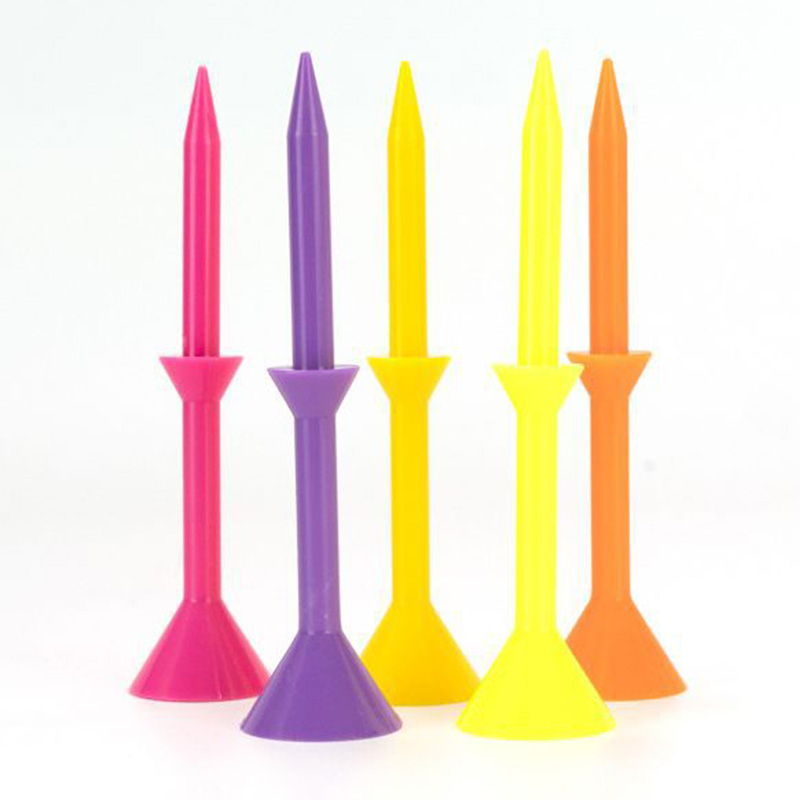
Golf spikes matter more than many facility managers realize. From turf wear to installation downtime, the choice of Golf spikes influences maintenance budgets, player safety and course appearance. This article examines measurable impacts, procurement strategies and standards-driven recommendations to boost operational efficiency.
Why Golf spikes Are a Facility Efficiency Issue
Golf spikes directly affect three core dimensions of facility performance: turf health, operational cost and user satisfaction. Poorly specified Golf spikes accelerate turf compaction and divot damage, increasing the frequency of aeration and turf restoration. They also raise the risk of slips or equipment damage, which translates into liability and replacement expenses. Decision makers must therefore assess Golf spikes not as incidental consumables but as components with measurable lifecycle cost implications.
Key performance drivers
- Material hardness and abrasion characteristics affect turf wear.
- Thread compatibility and retention systems determine maintenance downtime.
- Corrosion resistance controls replacement frequency in humid or coastal environments.
- Compliance with ASTM, EN or JIS standards informs safety and durability expectations.
Technical Comparison: Common Golf spikes Types
Understanding material and geometry differences helps procurement teams balance cost and performance. Below is a concise comparison to assist specification and RFP drafting.
Cost Impact Analysis of Golf spikes
A lifecycle view reveals hidden costs. Initial unit price is only a fraction of total cost. Consider replacement frequency, labor for change-outs, turf repair, and player complaints. Facilities that transitioned to higher-quality Golf spikes often reported fewer mid-season restorations and lower seasonal downtime, delivering net savings despite higher unit costs.
Example cost drivers
- Replacement rate per season (units per player per season).
- Labor hours for spike changes and shoe inspections.
- Turf restoration costs per square meter due to spike-induced wear.
- Liability or warranty incidents linked to substandard spikes.
Standards, Testing and Quality Assurance
Specify acceptance criteria in procurement documents. Reference ASTM sections for metallic fasteners and corrosion testing, EN specifications for materials and environmental resistance, and JIS where applicable for thread tolerances. Require suppliers to provide test reports and batch traceability. Insist on hardness, salt-spray, and retention torque tests to reduce post-installation surprises.
Procurement Guide for Decision Makers
Follow these steps to optimize Golf spikes sourcing:
- Define functional goals: durability vs turf gentleness.
- Benchmark unit cost against total cost of ownership models.
- Request sample lots for on-course trials under peak conditions.
- Specify testing requirements and acceptance criteria in contracts.
- Plan inventory and change-out schedules to minimize peak-season disruptions.
Trial evaluation checklist
- Turf impact after 4 weeks of play.
- Retention after repeated screw-ins and outs.
- Corrosion appearance after salt-spray testing.
- Player feedback on comfort and traction.
Operational Best Practices
Adopt these operational measures to protect turf and extend spike life: implement regular shoe checks at pro shops, require approved spike types for tournaments, and provide clear signage. Training grounds staff on quick-change procedures reduces downtime. Track replacement trends to identify problematic batches and engage suppliers proactively.
Common Misconceptions and Risks
Many believe cheaper Golf spikes are always cost-saving. In fact, low-cost spikes often increase total costs through higher replacement frequency and turf repairs. Another misconception is that one spike type suits all conditions; coastal links, parkland fairways, and synthetic turf have different demands. Risk mitigation requires situational specification.
Supply Chain and Lead Time Considerations
Reliable lead times and predictable quality are critical. Ask suppliers about production capacity, quality control protocols and contingency plans. A supplier with strong QC and flexibility lowers the risk of mid-season shortages. For customization needs, negotiate minimum order quantities and sample timelines early in the RFP phase.
Case Insight: Facility Outcome Improvements
A mid-size club replaced polymer spikes with a specified hybrid metal-polymer design and enforced a standardized spike policy. Within two seasons, they reduced turf repair spend by 28% and reported fewer player complaints about traction. The procurement investment paid back through reduced labor and materials for turf restoration.
Why Choose a Proven Partner
Selecting an experienced manufacturer ensures consistent performance. Look for partners who provide end-to-end support: design consultation, sampling, testing, and traceability. For procurement teams requiring customization and responsive supply, consider suppliers with strong production technology, quality control and international trade experience to support global standards compliance. You can review an example supplier offering consultation and customization at 无.
Action Steps for Facility Decision Makers
Start with a simple audit: quantify current replacement rates, incident reports and turf repair costs attributed to Golf spikes. Run a one-season trial with a higher-specification spike, measure outcomes against baseline and use data to build a total cost of ownership model. Engage suppliers early and require standardized tests to de-risk procurement.
Final Thoughts
Golf spikes are more than accessories; they are operational levers that influence turf longevity, safety and budget. A strategic approach that combines standards-based specification, trial validation and supplier accountability yields measurable efficiency gains. For decision makers seeking vendor partnerships that deliver expertise, traceability and customization, a careful supplier selection process will protect both turf and the bottom line.
If you would like help auditing your current Golf spikes inventory or creating a procurement specification, contact our team for a focused consultation. We combine industry standards knowledge, manufacturing insight and global logistics experience to help facilities reduce cost and improve performance.
Please give us a message

Hello! How may I help you?
Welcome to our website. We are excited to chat with you!
Contact Us

